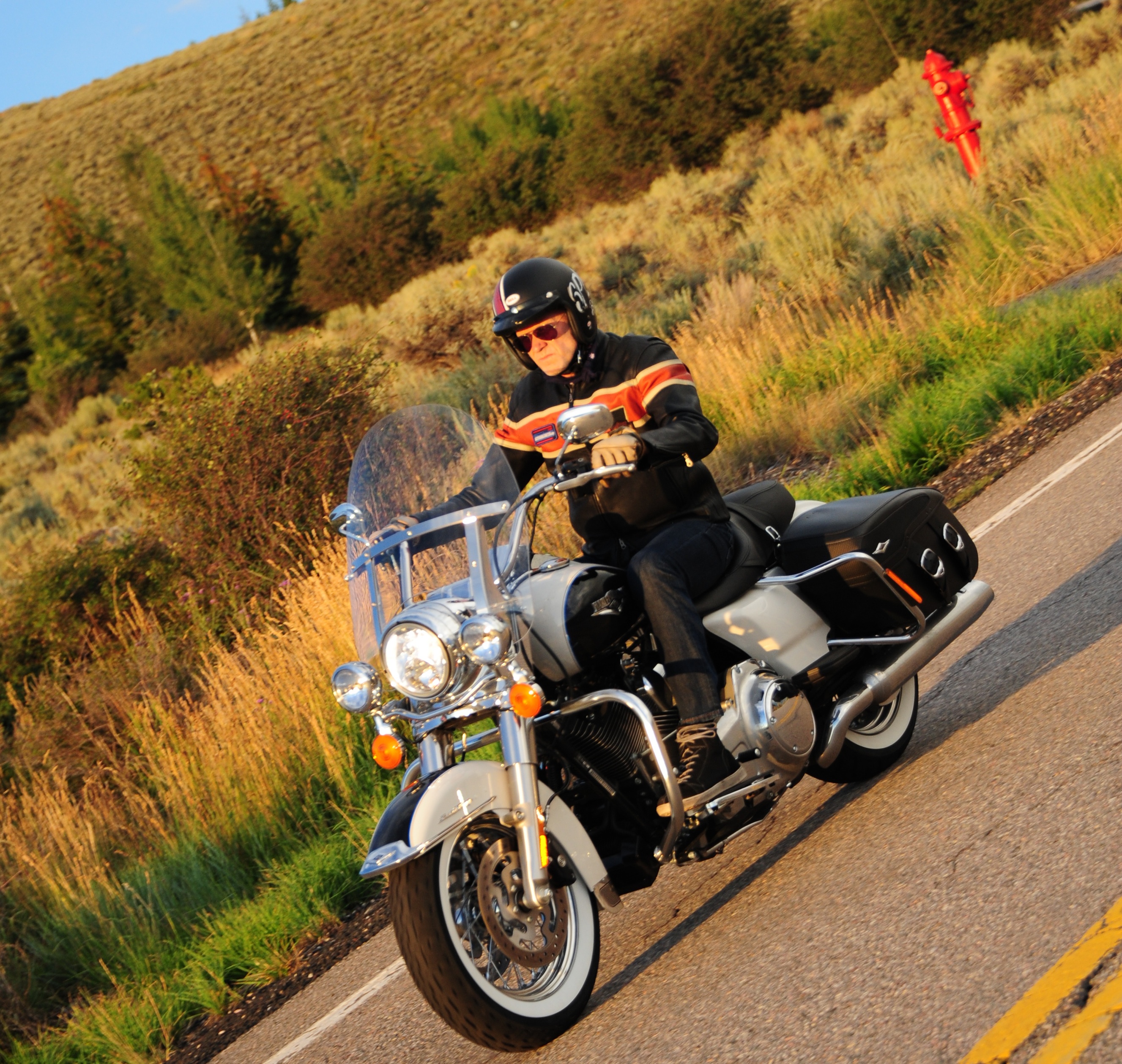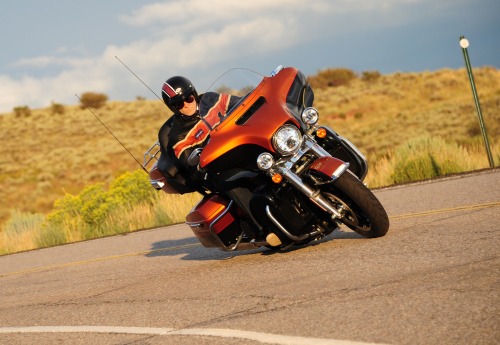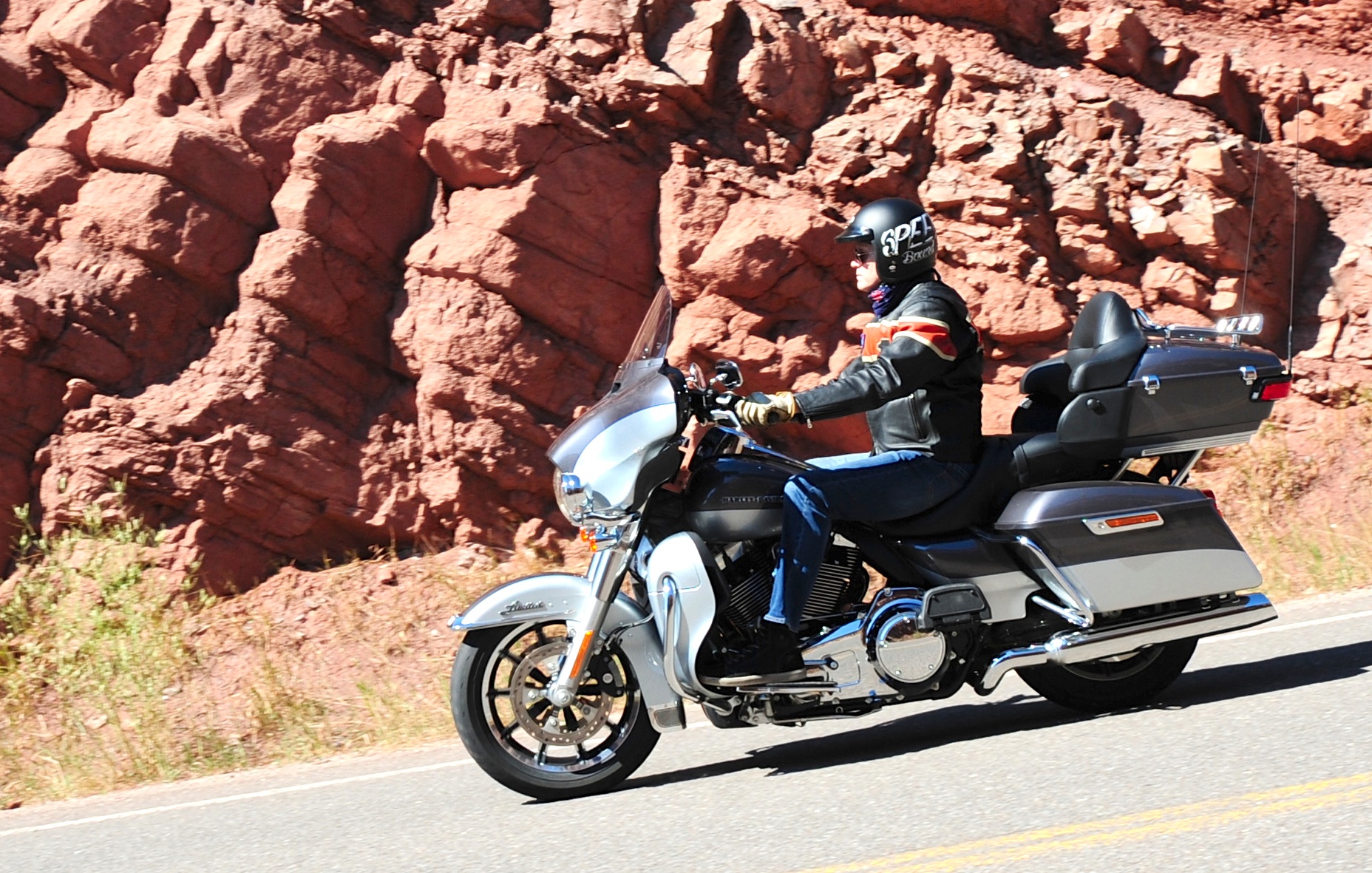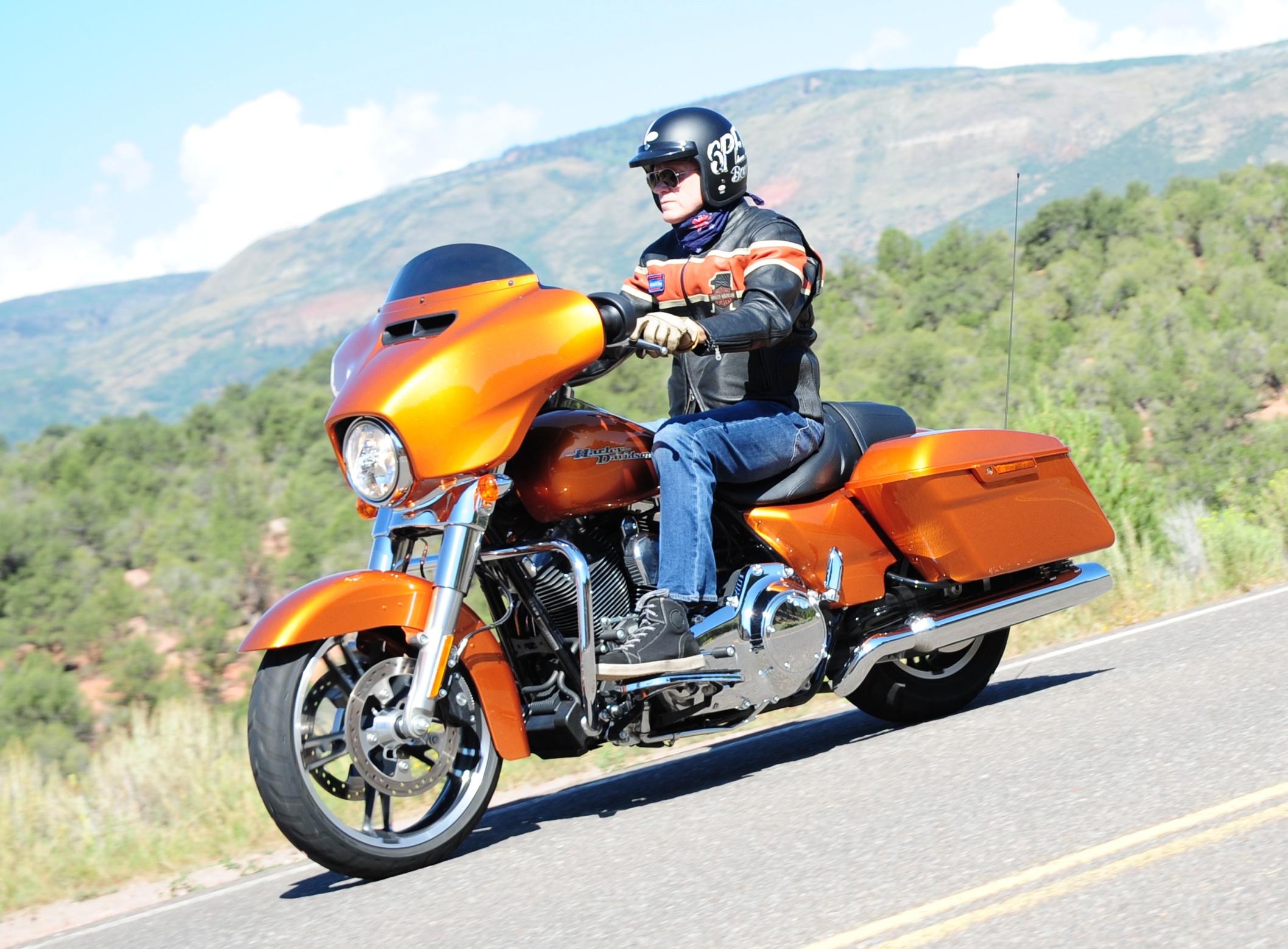It took some time, but Harley-Davidson has suddenly come thundering into the 21st century, thanks to its Project Rushmore.
The new Touring features hi-tech infotainment systems, wind-tunnel aerodynamics, LED and halogen headlights, linked brakes, hydraulic clutch and partial water cooling.
It’s typical of Harley not to be the first with technology. But when they do modernise, they do it with a unique flare – take for example their visually discrete ABS.
While most changes over the years at Harley have been evolutionary, this time the Touring range has had quite a revolution that they call Project Rushmore. It involved asking their customers what they want and then delivering it.
All of a sudden you can’t discount Harley tourers for a lack of modern technology.
The biggest revolution is the new 103 Twin-Cooled High Output engine in the Ultra Classic, Ultra Limited and the 110 version in the Ultra CVO.
By Twin-Cooled, Harley means liquid cooling. But the two tiny radiators in the lower fairings of the Ultras feed a mixture of water and coolant only to the heads of the V-twin around the exhaust outlets, the hottest part of the engine.
Apart from trying to meet stringent new emissions targets, the liquid helps to keep engine temperatures down by 75C, making the riding experience much cooler.
The cooler-running engine also allows a higher compression ratio of 10.1:1 and provides a 10% higher output.
The Road Glide has been temporarily dropped from the Touring range but is expected to make a return as early as next year. Meanwhile, the Street Glide and Road King Classic get a new air-cooled High Output Twin Cam with a higher and earlier cam profile and a high-flow air filter that increase output by 5%.
Other hi-tech changes to the Touring line-up include two new Boom! Box infotainment systems with Bluetooth, voice activation, text-to-speech technology and a top-of-the-line GT model that finally brings GPS and touch-screen technology to Harley.
Despite all these changes, the new Touring range is up to $2000 cheaper than before.
The first thing you will notice about the new Ultra Classic or Ultra Limited is that you can’t notice the water-cooling.
It’s cleverly hidden in the fairing lowers with discrete tubing that goes up into the cylinder heads under the tank.
What you may notice in all the Touring bikes is that they look a little sleeker, a little more slammed in the rear end with a central vent in the front of the Ultra and Street Glide batwing fairings.
This is all the result of extensive aerodynamic testing in two university wind tunnels to reduce buffeting, direct cooling air on to the rider and optimise the venting in the lowers and the flaps on the fairing.
On the world launch of the Touring range in the Rocky Mountains of Colorado, it quickly became evident that it was money well spent.
Despite hot 30-35C days, the vents worked well to keep the rider cool. The cooler engine heads also kept temperatures in the crotch much lower.
The new windscreens are so effective, they were able to lower them by 77mm and still reduce buffeting.
At 180km/h on a lonely stretch of prairie, I was still able to hear quiet passages of a Moody Blues song and when an afternoon thunderstorm struck, I could see over the top of the screen while my visor copped only light spots of rain.
Amid heavy truck traf
Rider comfort is improved with a plusher Ultra seat and narrower front sections of the rider seats on all bikes to accommodate shorter riders. The air filter also has a lower profile so it doesn’t rub against your leg.
Pillions get more width and depth in their seat, more room in front of the pannier bars and the Ultra has more comfortable armrests so your arms don’t slide off.
The panniers now come with a one-touch latch on the inside front edge so the rider or pillion can easily open them with one hand while seated.
It’s a much more convenient arrangement than the awkward latch on the outside of the previous panniers. And despite the Tour Pak topbox on the Ultra appearing sleeker, it’s actually has 10% more capacity.
Harley has cleaned up the clutter and confusion of the instrument panel and switchblocks.
First, there are only three gauges instead of five which means they are bigger with more legible numbering and it leaves more room for bigger speakers. Ambient and oil temperatures are now included on the LCD info screen.
The new switch controls have contoured buttons that provide better feel while all the infotainment controls are now operated by two convenient five-way joysticks on each switchblock.
It sounds confusing, but they are intuitive and much easier to operate than BMW’s ring around the left bar on its K 1600.
There are now two 25-watt infotainment units available, both with colour screens and 1% distortion instead of 20%, so the sound is crystal clear, even at full blast. An optional 75-watt amplifier is also available.
The top-of-the-range GT system on the Ultra Limited features GPS and a convenient touch screen, although the joysticks are so good you really don’t need it.
We rode on and on into the Rockies twilight and found the new dual halogen headlights so much brighter with a more even spread of light than before. But the truly illuminating LED “Daymaker” headlights which almost return daylight to the road ahead.
Despite riding most of the two days in the dizzying rarified air of the Rockies some 3600m above sea level, the new engines didn’t struggle at all.
It was difficult to detect the extra power from the Twin-Cooled engine although roll-on acceleration in fifth gear seems more lively.
The Twin-Cooled is also definitely cooler and both engines sound a little less mechanical. That could be something to do with the aero directing the sound away from the rider or the quieter valve action in the new cam profile.
It allows the rider to focus more on the throaty sound of the mufflers once the butterfly valve opens them up above about 3500 revs.
Extra go is balanced by extra whoa in the new “Reflex” linked brake system with ABS.
They don’t operate until 40km/h so you can still control the bike in slow-speed maneuvres using just the back brake.
Above that speed, if you hit the front or back brakes, one caliper on the opposite end also activates.
Linked brakes work well on heavy bikes and these are no exception.
Stopping power is almost brutal when you hit both levers together, with less dive or squat than before.
That’s the result of new suspension and stiffer and 14% thicker 49mm forks.
Harley has also played around with the steering geometry to make it more heroic on turn-in and although static lean angle remains unchanged, the real-world lean angle is improved because it doesn’t wallow as much through mid-corner bumps.
Ever since Harley stiffened the frame, the Touring range has been the best-handling family. With the 2014 suspension tweaks, it’s now even better.
Together with the more powerful and cooler engine, ergonomic updates, aerodynamic improvements and modern hi-tech features, it makes a very convincing argument to go Harley if you want to do some serious cross-country touring.
HARLEY-DAVIDSON PROJECT RUSHMORE TOURING TECH SPECS
- Prices (rideaway): $38,250 (Ultra Ltd), $37,250 (Ultra Classic), $33,995 (Street Glide), $32,495 (Road King)
- Engines: Rubber-mounted, air-cooled 1690cc High Output Twin Cam 103; Twin-Cooled 1690cc High Output Twin Cam 103 (Ultras)
- Compression: 10.1:1
- Headlights: Dual halogen or LED Daymaker
- Panniers: one-touch latch opening, Tour-Pak topbox with one hand opening (Ultras)
- Transmission: 6-Speed Cruise drive with hydraulic clutch (except Road King Classic)
- Suspension: 49mm forks, dual air adjustable shocks
- Tank: 22.7 litres
- Brakes: Reflex linked system with ABS
- Wheels: 130mm, 17-inch front; 180mm,16-inch rear




